Persian rugs have a storied past, deeply interwoven with the history of Persia, now modern-day Iran. These rugs have been a central part of Persian culture for over 2,500 years, symbolizing the artistic and cultural heritage of the region.
In this exploration, we’ll delve deep into the world of Persian rug borders, uncovering the central role they play in rug design and the rich artistry and symbolism they hold.
Key Takeaways
Persian rug borders play a central role in rug design, framing the central field and enhancing its aesthetics. Creating these borders requires meticulous craftsmanship, showcasing the dedication of skilled artisans.
Persian rug borders feature a diverse range of patterns and motifs, drawing inspiration from nature, history, and Persian culture. They reflect the rich cultural and historical heritage of Iran, with different regions known for distinct border designs.
Oriental rug borders have a timeless appeal in contemporary settings, effortlessly complementing various interior styles. They have influenced global design trends, with elements from Persian rugs finding their way into modern interiors and fashion.
Oriental rugs, including their borders, appreciate over time and often become cherished family heirlooms.
What are Borders on Persian Rugs
The borders of Persian rugs are not mere edges; they are canvases showcasing the weaver’s skill and creativity.
The Persian rug borders often feature complex designs, ranging from floral motifs symbolizing growth and rebirth to geometric patterns representing the eternal flow of life.
These borders are essential in framing the central theme of the rug, enhancing its visual appeal and storytelling prowess.
The Meticulous Craftsmanship Behind Persian Rug Borders
Creating Persian rug borders is a labor-intensive process that requires incredible skill and precision.
Each border is meticulously handwoven by skilled artisans, a tradition that has been passed down through generations.
The intricate details and patterns are not just a testament to the weaver’s talent but also to the cultural significance that these borders hold.
Crafting Oriental Rug Borders: Who Makes the Decision?
The design of rug borders is largely determined by traditional weavers, who draw from a rich heritage of regional motifs and cultural symbols.
In contemporary practice, this process can be collaborative, involving modern designers and client preferences, especially in custom rug creations.
The blend of these influences shapes each rug border, merging historical artistry with modern trends and personal tastes.
Do All Persian Rugs Including Antique Rugs Have Borders?
Not all Persian rugs, including antique ones, have borders. While borders are a common and characteristic feature in many Persian rug designs, there are exceptions where rugs may be crafted without borders.
In traditional Persian rug-making, the use of borders is prevalent, and these borders are often intricate, serving to frame the central design of the rug. However, certain styles or regional designs may favor a borderless look, focusing instead on a central medallion or an all-over pattern that extends to the edges of the rug.
With antique Persian rugs, you may encounter both styles – those with elaborately designed borders and those without borders, where the emphasis is on other design elements. The choice to include or omit a border is part of the artistic expression and design preferences of the rug maker, influenced by regional traditions and the intended use of the rug.
The Role of Persian Rug Borders
Aesthetic Appeal:
Visual Harmony: Persian rug borders are meticulously designed, featuring patterns and colors that complement the rug’s central theme. This harmony creates a visually pleasing effect, capable of tying together various elements in a room.
Elegant Framing: The border of a Persian rug acts like a frame, highlighting its artistic central pattern. This framing effect can add an element of sophistication and elegance to your living space.
Versatility in Design:
Complementing Various Styles: Whether your home has a modern, minimalist, rustic, or traditional theme, Persian rug borders can complement and enhance these styles. The diversity in patterns and colors makes them versatile decor elements.
Adaptability: From being a centerpiece in your living room to adding warmth to your bedroom, these rugs can adapt to various spaces and functions in your home.
Color Schemes and Patterns:
Color Coordination: The variety of colors in Persian rug borders can be used to either create a focal point or to tie in with the existing color scheme of a room.
Pattern Diversity: The range of patterns available in Persian rug borders allows for a lot of creative freedom in matching the rug to your home’s decor style.
The Elegance of the Main Border in Persian Rugs
In the intricate world of Persian rugs, the main border is more than a mere framing element; it is a central component that often defines the rug’s character and artistry. The main border in Persian rugs is a testament to the weaver’s skill and the rich cultural heritage from which these rugs originate.
Defining the Main Border:
The main border is typically the widest and most elaborate border that encircles the rug. It serves as a frame, setting the tone for the rug’s overall design and color scheme.
Unlike the narrower guard borders or minor borders that may flank it, the main border is where the most intricate patterns and vibrant colors are displayed.
Decoding the Symbolism in Persian Rug Borders
The borders of Persian rugs are rich in symbols. For instance, the ‘boteh’ or paisley symbolizes life and eternity, while the ‘gul’ represents the rose and is a symbol of perfection and beauty.
Each symbol woven into the borders of a Persian rug carries a story, a piece of wisdom, or a historical reference, making every rug a unique narrative.
Common Designs in Persian Rug Borders:
Boteh or Paisley: The boteh, a teardrop-shaped motif often likened to a cypress tree or a flame, is a recurrent design in Persian borders. It represents eternity, life, and fertility. This ancient motif has traversed cultures and is a testament to the enduring appeal of Persian designs.
Geometric Patterns: Geometric designs such as diamonds, hexagons, and repetitive linear motifs are prevalent in tribal rugs. These patterns often carry talismanic meanings, believed to ward off evil and bring good luck.
Floral Motifs: Often found in Persian rug borders, floral designs like roses, lotus, and peonies symbolize beauty, rebirth, and paradise. These motifs may vary from delicate, detailed renderings to stylized, geometric interpretations, depending on the region and style of the rug.
Tree of Life: Symbolizing eternal life, growth, and direct pathway to heaven, the ‘Tree of Life’ motif is a powerful symbol in Persian rugs. It is often intricately woven into the borders, connecting the earthly realm with the divine.
Animals and Birds: Sometimes, Persian rug borders feature animals and birds, each with its symbolism. For example, peacocks may represent beauty and divine protection, while lions could signify power and strength.
Regional Variations in Persian Rug Border Designs
Each region in Iran, known for its unique rug-making traditions, imparts distinct characteristics to these borders.
Tabriz rugs from Northwestern Iran, for example, are celebrated for their detailed and ornate borders, often adorned with intricate floral motifs. These borders complement the central medallion and corner designs, showcasing the region’s skill in detailed craftsmanship.
In contrast, Kashan rugs are recognized for their symmetrical and precise border designs, reflecting a different aesthetic that values balance and uniformity.
Likewise, Isfahan rugs from Central Iran are distinguished by their intricate floral patterns and palatial motifs, which are often mirrored in the complexity and elegance of their borders.
These regional styles not only highlight the diversity in Persian rug-making but also reflect the rich cultural and historical tapestries of their respective regions. From the elaborate designs of Tabriz to the harmonious patterns of Kashan, each region’s style contributes to the vast and varied tapestry of Persian rug artistry.
Colors and Their Meanings in Persian Rug Borders
Persian rugs are renowned not just for their intricate patterns and designs but also for their vibrant use of color, especially in the borders. These colors are not randomly chosen; they carry deep symbolic meanings, adding layers of interpretation and cultural significance to the rugs.
Red: The Color of Joy and Wealth
Commonly dominating the borders of many Persian rugs, red symbolizes happiness, wealth, and courage. It is often derived from natural dyes like madder root, giving it a rich, deep hue that stands the test of time.
Blue: Tranquility and the Divine
Blue, ranging from light sky tones to deep indigos, represents tranquility, honesty, and the afterlife. It is a color frequently associated with spirituality and is believed to ward off evil.
Green: The Color of Paradise
Green, less commonly used due to its traditional association with sacredness, symbolizes paradise, hope, and renewal. It is often used sparingly but adds a significant meaning when present.
Ivory and White: Purity and Cleanliness
Yellow and Gold: The Sun and Wealth
Yellow and gold tones in Persian rug borders symbolize the sun, power, and wealth. These colors are frequently used in rugs that were made for royalty or for those of high status. The range of these colors can vary significantly, from soft, muted yellows that bring a subtle warmth and brightness to the design, to bold, golden hues that radiate opulence and grandeur. The use of yellow or gold often serves to add a luxurious feel to the rug, highlighting the wealth and prominence of its owner. The sun-like quality of these colors also alludes to life, energy, and a divine connection, reflecting the rug’s grandeur and its cultural importance.
Brown and Beige: The Earth and Humility
Black: Power and Mourning
While less prevalent, black is used for outlining and defining designs. It symbolizes power, sophistication, and sometimes mourning. In rug borders, it can make other colors stand out and add a sense of depth.
In Persian rug borders, colors are not used in isolation; rather, they are woven together to create a harmonious and meaningful narrative. The interplay of different hues not only adds aesthetic appeal but also weaves a story that reflects the weaver’s intentions and cultural background.
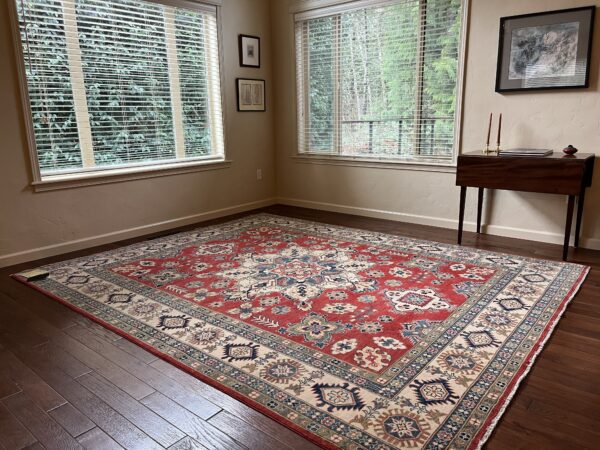
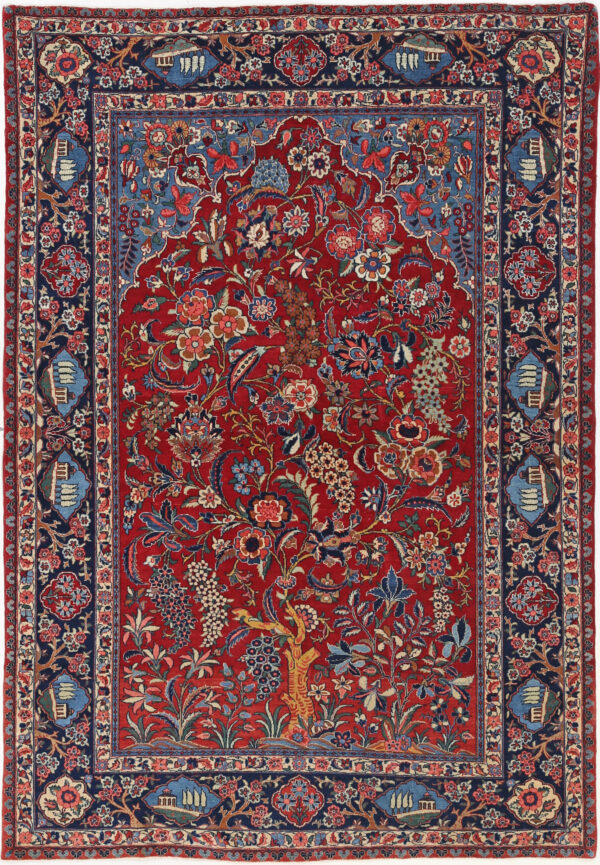
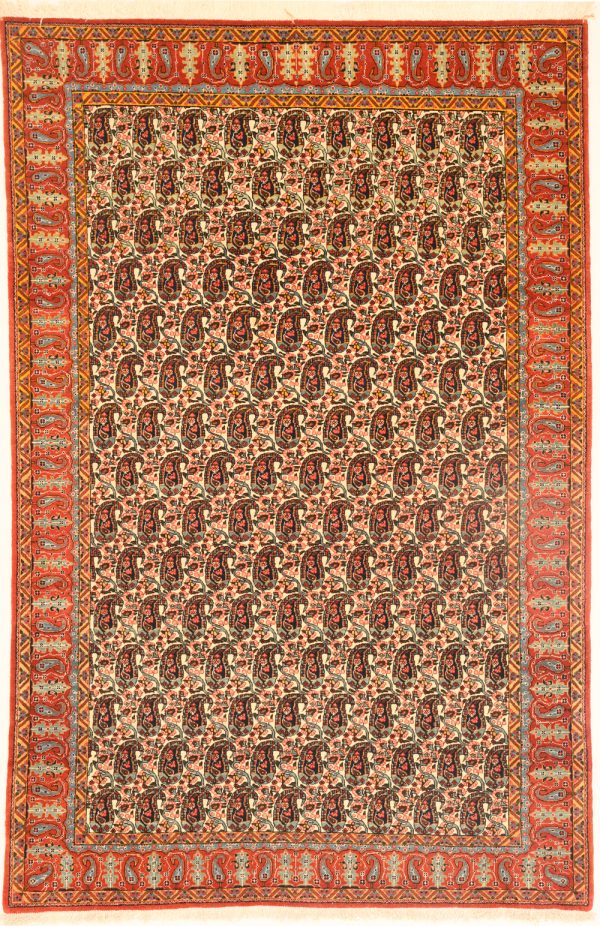
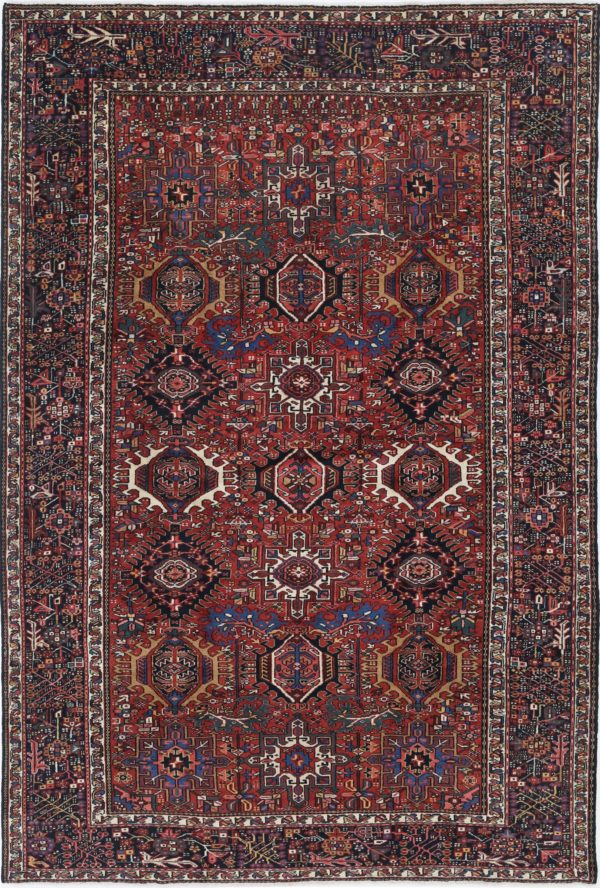
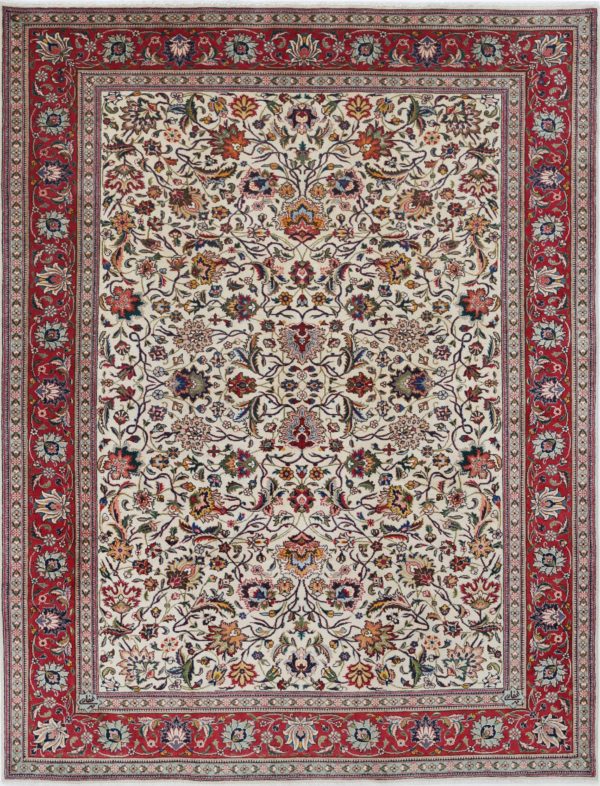
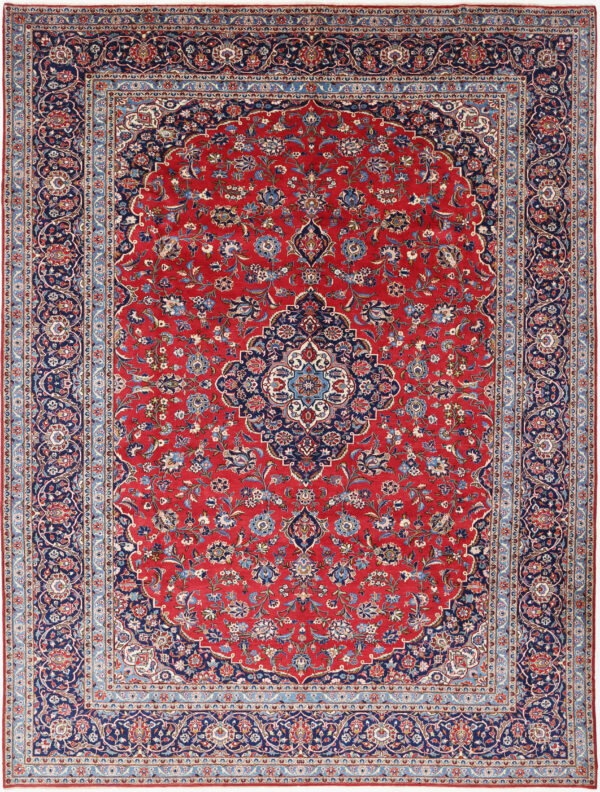
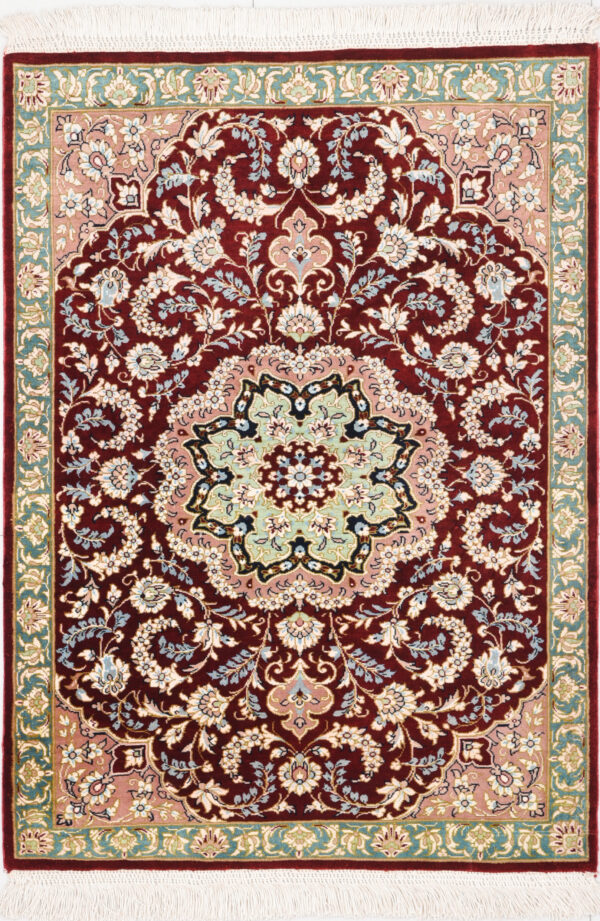
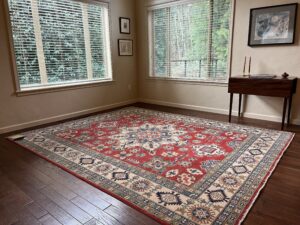

One thought on “How Does A Persian Rug Border Elevate Your Interior Design?”
I have been collecting Persian rugs for years purchased when visiting Dubai.
I use them on the floor for I feel they should be on display and used.
They are all pure silk, they are never spoken about in company, sometimes somebody will mention them in passing conversation.
I enjoy your web site immensely , thank you, there is always something to learn. Cheers John H